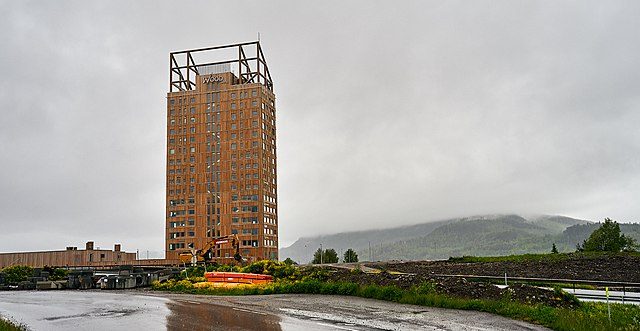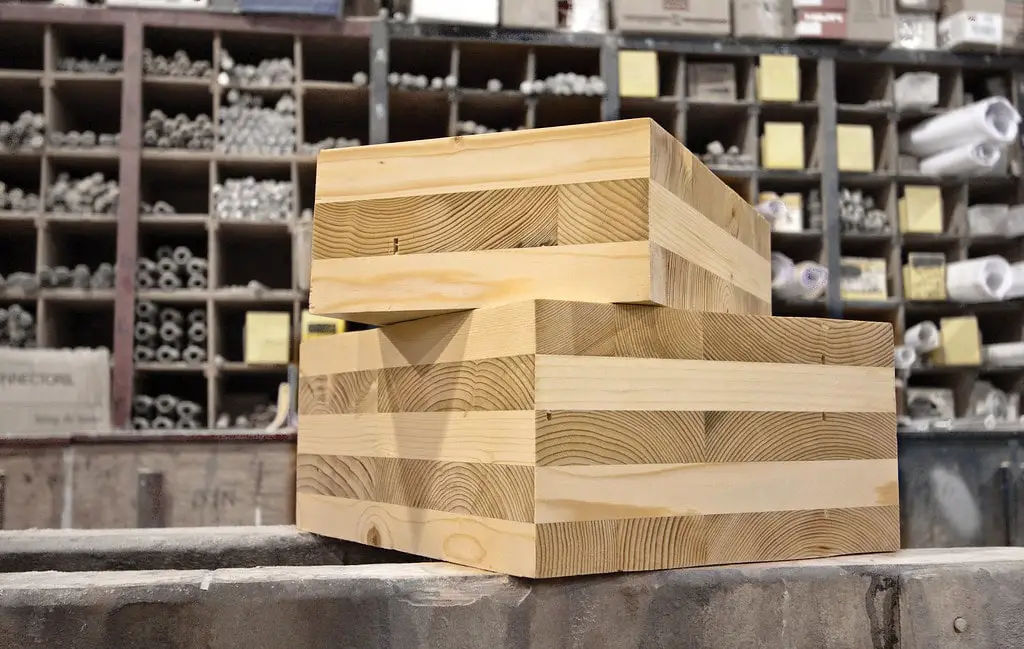Constructing buildings requires a large amount of energy and resources. The production of building materials such as concrete is a highly energy-consuming process. Each year, more than 4 billion tonnes of the material are created, which accounts for around 8% of the global CO2 emissions.
In order to fight the current climate crisis and create a more sustainable environment, new solutions must be found that address this issue. There are a variety of promising building materials that can contribute to this change, such as Bamboo, Straw, Cork, or also Timber.
Thanks to new technological improvements, timber can achieve a stronger and more resistant quality. This makes it possible to create larger and taller wooden buildings.
What is Cross Laminated Timber?
Cross Laminated Timber or CLT is a wooden building material that is made by glueing layers of lumber boards together at a 90° angle. Usually, three, five or seven panels get stacked on top of each other in order to provide strengths. CLT is more sustainable than concrete or steel as it requires less energy to produce and trees are able to absorb CO2.
Advantages
There are many advantages to the use of Cross Laminated Timber (CLT). Although one of the most popular benefits seems to be the sustainability aspect of this product, there are many more that real estate developers need to take into account.
Many Use-Cases
CLT can be used in many parts of a building. This includes walls, beams, roofs, floor, and decks. In addition, it is also very easy to adapt to its use case, as more layers can be added easily in order to increase its strengths.
Sustainable
Using timber is a better choice from an environmental perspective as wood is a natural product that is renewable. Trees are also absorbing CO2 during the photosynthesis process and are a major factor against climate change. This is why an efficient and sustainable management of forests is also necessary.
Stronger
The characteristics of Cross Laminated Timber make it exceptionally strong and thus it can even be compared to steel or bricks. This is why we are able to create large buildings, completely made of timber.
Prefabrication
Cross Laminated Timber floors or walls can already be assembled at the production site of the material before delivering to the property. This helps to reduce the construction time and also lower costs.
Fire Protection
Even though most people probably think that a building made out of timber would be a potential fire hazard, CLT is actually quite safe when it comes to this subject. Once the wood is charring, it is able to keep its structure. Most often, the steel connections are the problem and are not able to stand the heat
Insulation
Wood has better insulation capabilities than concrete thanks to its layered structure. It is also more capable of absorbing sound which makes it a perfect solution for spaces that should be quiet, for example, offices or residential buildings.
Examples of CLT Buildings
Nowadays, timber buildings are getting taller and taller, with some projects even surpassing 100m in height. The following examples are a few of the highest buildings in existence, made by using wood and Cross Laminated Timber.
- Mjøstårnet Building | Brumunddal, Norway | 85m
- See Picture Below
- HoHo | Vienna, Austria | 84m
- Tall Wood Residence | Vancouver, Canada | 53m
- The Tree | Bergen, Norway | 49m

By Øyvind Holmstad – Own work, CC BY-SA 4.0, https://commons.wikimedia.org/w/index.php?curid=79433990
Conclusion
Cross Laminated Timber has many benefits over traditional building materials such as concrete or steel. The strength provided by its layered and angled structure helps to create taller and more solid wooden buildings. It is much more popular in recent years and can be a big factor when creating a more sustainable environment.
If you want to learn more about sustainable buildings, smart cities and PropTech, feel free to take a look at our other articles.

